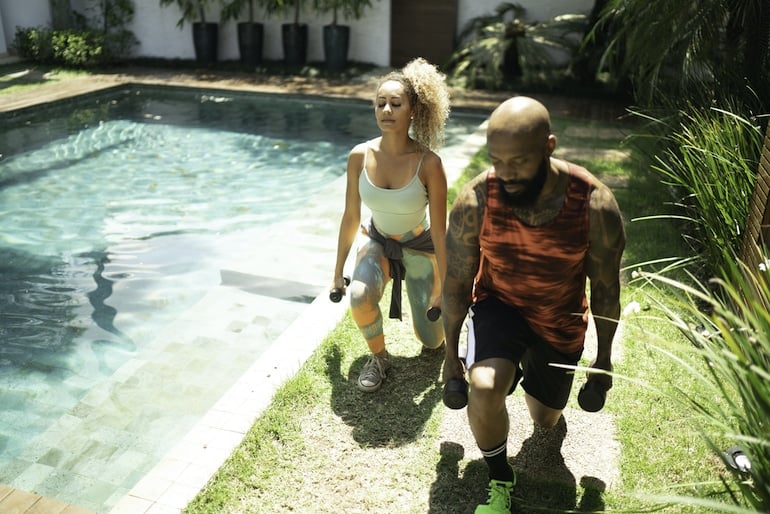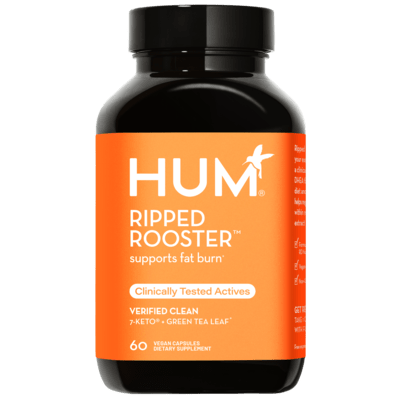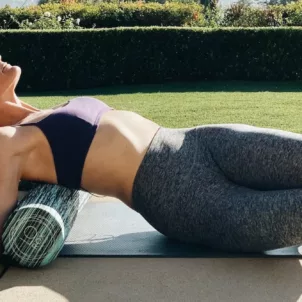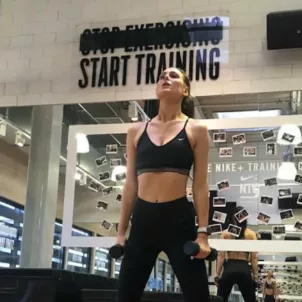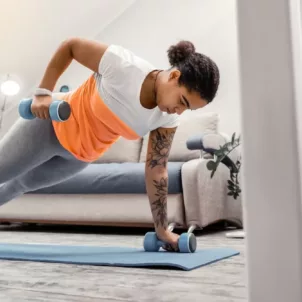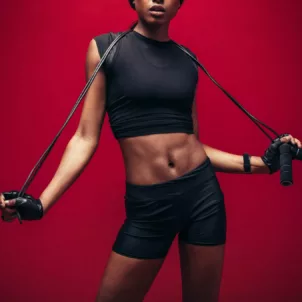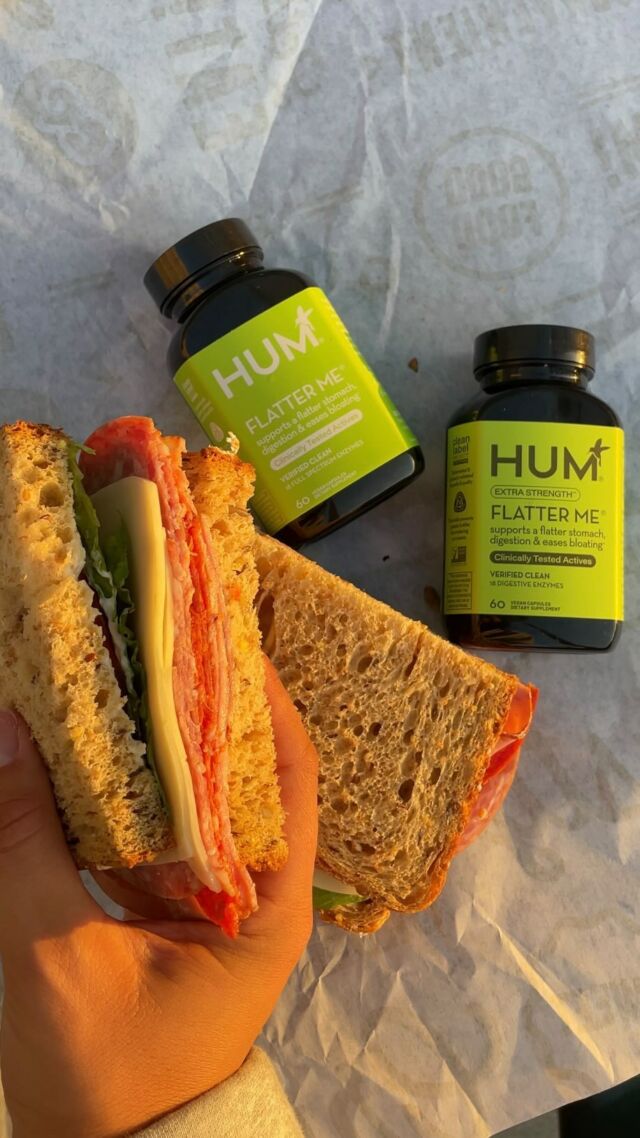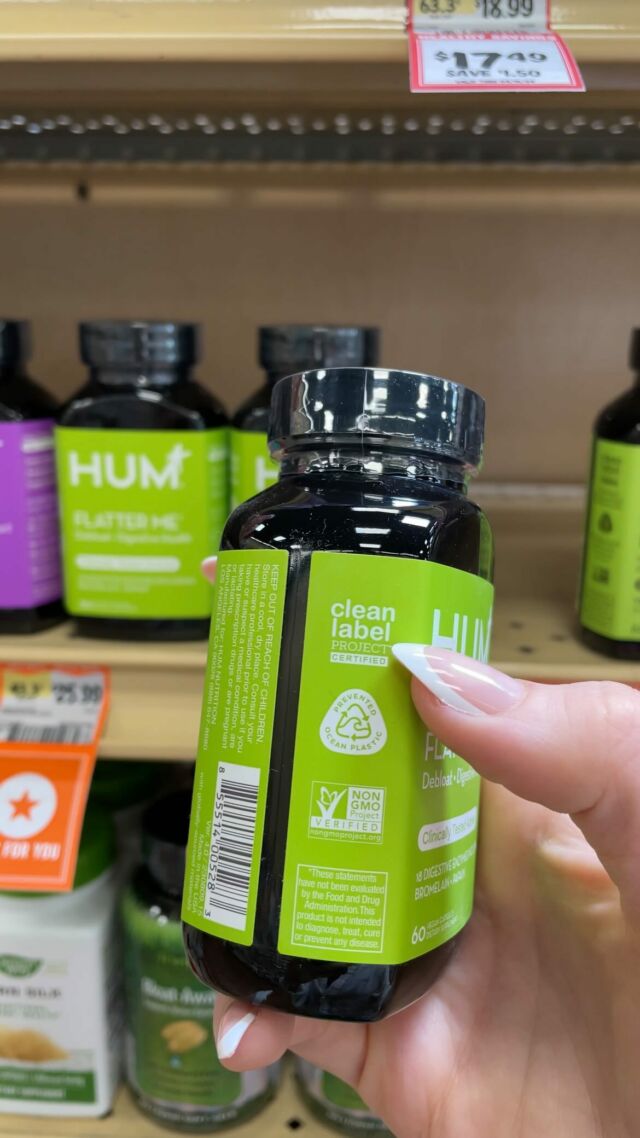Medically Reviewed By
Gaby Vaca-Flores, RDN, CLE
Registered Dietitian Nutritionist
Jessica Nelson, RDN, CPT, teaches us the ins and outs of functional fitness.
Learn how a functional fitness routine can help improve your quality of life and upgrade movements for even the simplest tasks. Plus: a simple (yet challenging!) full-body functional training workout you can do at home or at the gym.



What is Functional Fitness?
Functional fitness is a type of training involving exercises that help prepare the body to perform everyday tasks with ease. Such tasks include sitting, standing, walking, lifting, pushing, pulling, rotating, and climbing. A functional exercise program combines multidirectional movements utilizing multiple muscle groups. It’s conveniently tailored to both your strengths and weaknesses.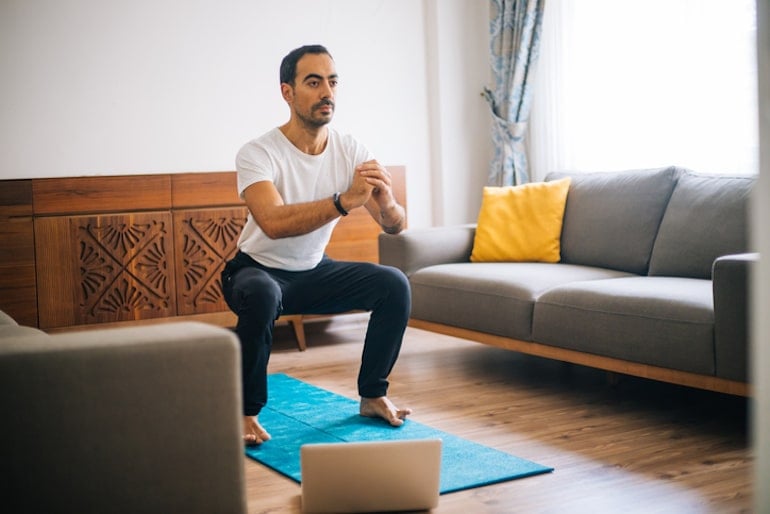
Benefits of Functional Fitness
Promotes Strength + Mobility
Functional exercise is vital in strength training to prevent injury and promote longevity. Specifically, a review of several functional fitness studies showed beneficial outcomes on muscle strength, balance, and mobility.Counteracts Age-Related Loss of Muscle Mass
Once you reach your 30s, muscle mass decreases by an average of three to five percent each decade. Unfortunately, the loss of muscle mass results in reduced strength and function. This decrease affects posture, stability, coordination, and endurance. With these realities in mind, it’s clear that functional exercises are essential to encourage active, healthy daily living.Requires Minimal Equipment
Lastly, a major benefit of functional fitness is that many of the exercises require just your body weight. Meanwhile, other moves call for minimal equipment such as resistance bands or dumbbells.The 7 Functional Movements
1. SQUATS
Squats involve multiple muscles (quads, hip flexors, gluteus, and hamstrings) in your legs. They also require core strength. They’re essential for many aspects of everyday life, like standing up from a seated position. Additionally, we squat when we tie our shoes and lift heavy objects. Types of squats include:- bodyweight squat
- jump squat
- yoga squat
2. Lunges
Lunges can be multidirectional (forward, reverse, diagonal, etc.). They’re great for improving your range of motion and balance, while also strengthening the core, hips, and gluteus. This type of functional movement is a part of walking, running, and climbing stairs. Examples of lunges include:- walking lunges
- lateral lunges
- curtsy lunges
3. Pushes
Push type exercises are great for your upper body (shoulders), chest, and core strength. The functional push movement breaks into two groups: horizontal pushes and vertical pushes. Push type exercises come into daily life when you push up from off the ground or when you put something away overhead. Examples of push exercises include:- standard pushups
- bench press
- sled push
- overhead shoulder press
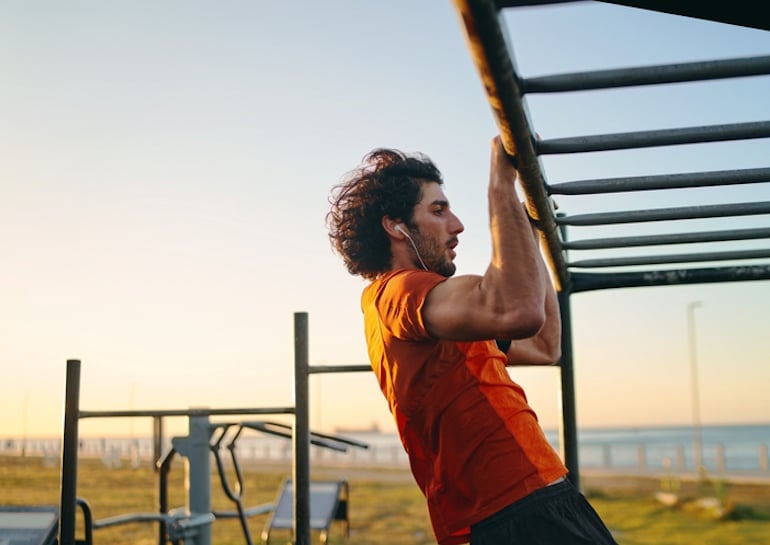
4. Pulls
Similar to the push movement, pull movements are also separated into two movement patterns: horizontal pulling and vertical pulling. These functional fitness moves are ideal for strengthening the back, biceps, and triceps. Thankfully, they can help improve posture and prevent back injuries. Pulling movements are also great for improving grip strength, which is essential for activities like walking your dog and carrying heavy bags. They also come in handy for opening jars. Pull exercises include:- pull-ups
- lawn mower band pulls
- bent over row
- lat pull-downs
5. Hinges
Hip hinge movements are utilized every day. When done properly, they help with range of motion, balance, and strengthening the core. The back-body muscles such as hamstrings, gluteus, and the muscles along the spine are also involved. We use hinge movements when we bend forward to pick things up. We also perform them in almost every sport. Hinge movement exercise examples include:- deadlifts
- kettlebell swings
- hip thrusts
- weighted glute bridges
6. Rotations + Twists
The trunk muscles (core, obliques, lower back) help with balance and stability, and when you transfer power from one half of the body to the other. We make rotational movements all day, every day. For instance, they include any time you reach across your body, like turning around to grab something. We also do them when sweeping, throwing, or running. Functional exercises of this sort include:- Russian twists
- wood chops
- windmill stretch
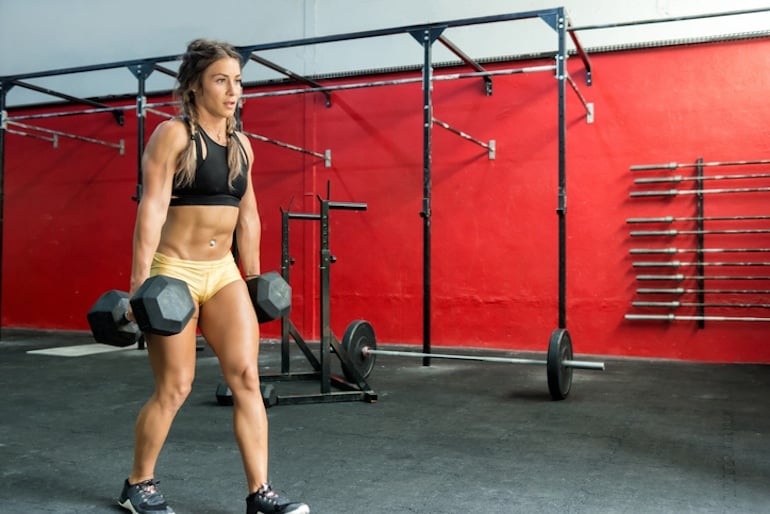
7. Gaits + Walks
To move the body forward, your gait or walk requires dynamic stability, balance, hip mobility, core strength, and posture. The walking movement combines multiple functional movements such as rotations, lunges, pushes (starting), and pulls (stopping). Sample exercises in this category include:- farmers walk
- bear crawls
- overhead carries
A Functional Fitness Workout
Here’s sample training routine of the best functional exercises. They combine all seven functional movements for a total body workout. Complete two to four rounds of this functional workout, performing each individual exercise with 10 to 15 reps using moderate dumbbell weights.- Squat with overhead dumbbell press
- Alternating forward lunge with crossbody punches
- Inchworm to pushup
- Single-leg dumbbell row (10 reps for each leg)
- Seated dumbbell Russian twist
- Bear crawl
The Bottom Line
In sum, your strength training program should include each of the seven functional exercises. With functional fitness, the primary goal is to build upon the fundamentals of human movement. In due time, you’ll be equipped to improve your quality of life for years to come.More like this
